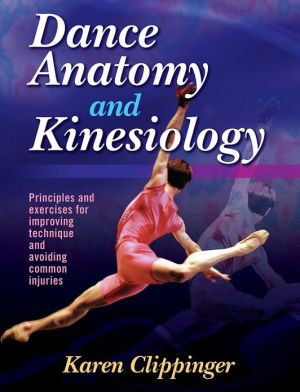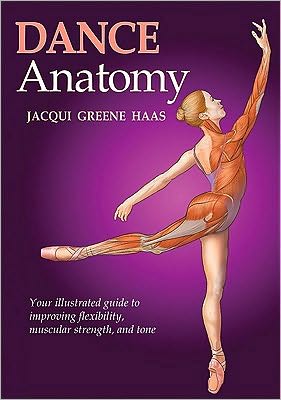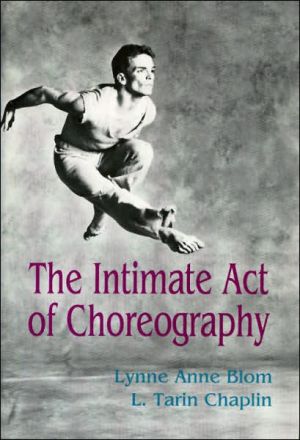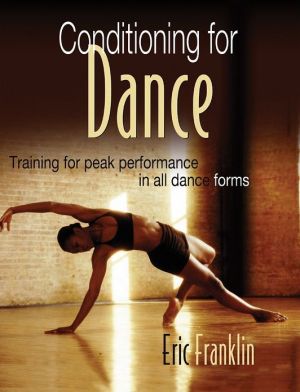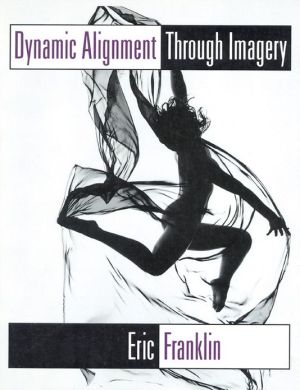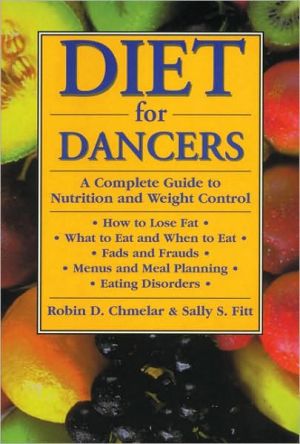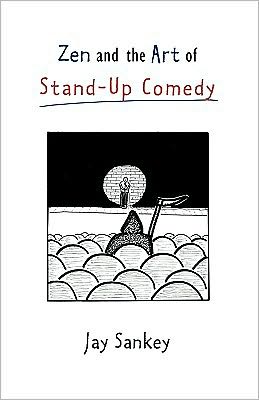Dance Anatomy and Kinesiology
All dancers are looking to achieve optimal performance—and Dance Anatomy and Kinesiology will help them do just that.\ This text helps dancers learn anatomical and biomechanical principles as they apply to dance performance. It focuses on optimal dance movement and the related principles for understanding the function of body joints. And by applying those principles, dancers can help reduce their risk of injury and enhance their performance longevity.\ In addition, Dance Anatomy and...
Search in google:
All dancers are looking to achieve optimal performance--and Dance Anatomy and Kinesiology will help them do just that. This text helps dancers learn anatomical and biomechanical principles as they apply to dance performance. It focuses on optimal dance movement and the related principles for understanding the function of body joints. And by applying those principles, dancers can help reduce their risk of injury and enhance their performance longevity. In addition, Dance Anatomy and Kinesiology includes special practical applications: Concept Demonstrations provide hands-on exercises to try. Tests and Measurements are specific to selected regions of the body. Dance Cues help analyze cue effectiveness and promote optimal movement execution. Study Questions and Applications help apply chapter concepts. Attachments provide the pronunciations, attachments, and key actions of the primary muscles covered in this text. The first two chapters cover the skeletal and muscular systems as they apply to dance and provide basic anatomical terminology and concepts. Chapters 3 through 7 delve into specific areas of the body--the spine, the pelvic girdle and hip joint, the knee and patellofemoral joints, the ankle and foot, and the upper extremity. These chapters encompass primary bones, muscles, joints, alignment deviations, mechanics, and injuries for the given region, with special considerations for dance. They present strength and flexibility exercises to help dancers improve technique and prevent injuries. And they contain many practical exercises and examples that are specific to dance technique to help dancers apply the material. The material is augmented by more than 250 illustrations and nearly 350 photographs, which will appeal to the visual learning abilities of many dancers and reinforce the connection between technique and art. The final chapter presents a schema to help analyze full-body dance movements to determine optimal execution. Dance Anatomy and Kinesiology offers valuable scientific knowledge and understanding for dancers, helping them to blend anatomical and kinesiological principles with artistic expression. Such a blend of science and art will empower dancers to realize their potential and expand their artistic vision.
Preface AcknowledgmentsChapter 1. The Skeletal System and Its Movements Primary Tissues of the Body Bone Composition and Structure Bone Development and Growth The Human Skeleton Joint Architecture Body Orientation Terminology Joint Movement Terminology Skeletal Considerations in Whole Body Movement Summary Study Questions and ApplicationsChapter 2. The Muscular System Skeletal Muscle Structure and Function Microstructure of Skeletal Muscle and Muscle Contraction Muscle Architecture Muscle Attachments to Bone Muscles, Levers, and Rotary Motion Types of Muscle Contraction (Tension) Muscular Considerations in Whole Body Movement Learning Muscle Names and Actions Summary Study Questions and ApplicationsChapter 3. The Spine Bones and Bony Landmarks of the Spine Joint Structure and Movements of the Vertebral Column Description and Functions of Individual Muscles of the Spine Ideal Spinal Alignment and Common Deviations Spinal Mechanics Muscular Analysis of Fundamental Spinal Movements Key Considerations for the Spine in Whole Body Movement Special Considerations for the Spine in Dance Conditioning Exercises for the Spine Back Injuries in Dancers Summary Study Questions and ApplicationsChapter 4. The Pelvic Girdle and Hip Joint Bones and Bony Landmarks of the Hip Region Joint Structure and Movements of the Pelvic Girdle Joint Structure and Movements of the Hip Description and Functions of Individual Hip Muscles Alignment and Common Deviations of the Hip Region Pelvic and Hip Mechanics Muscular Analysis of Fundamental Hip Movements Key Considerations for the Hip in Whole Body Movement Special Considerations for the Hip in Dance Conditioning Exercises for the Hip Hip Injuries in Dancers Summary Study Questions and ApplicationsChapter 5. The Knee and Patellofemoral Joints Bones and Bony Landmarks of the Knee Region Joint Structure and Movements of the Knee Description and Functions of Individual Knee Muscles Knee Alignment and Common Deviations Knee Mechanics Joint Structure and Movements of the Patellofemoral Joint Patellofemoral Alignment and the Q Angle Patellofemoral Mechanics Muscular Analysis of Fundamental Knee Movements Key Considerations for the Knee in Whole Body Movement Special Considerations for the Knee in Dance Conditioning Exercises for the Knee Knee Injuries in Dancers Summary Study Questions and ApplicationsChapter 6. The Ankle and Foot Bones and Bony Landmarks of the Ankle and Foot Joint Structure and Movements of the Ankle and Foot Description and Functions of Individual Muscles of the Ankle and Foot Alignment and Common Deviations of the Ankle and Foot Mechanics of the Ankle and Foot Muscular Analysis of Fundamental Movements of the Ankle and Foot Key Considerations for the Ankle and Foot in Whole Body Movement Special Considerations for the Ankle and Foot in Dance Conditioning Exercises for the Ankle and Foot Ankle and Foot Injuries in Dancers Summary Study Questions and Applications Ankle and Foot Injuries in Dancers Summary Study Questions and ApplicationsChapter 7. The Upper Extremity Bones and Bony Landmarks of the Shoulder Complex Joint Structure and Movements of the Shoulder Girdle Joint Structure and Movements of the Shoulder Description and Functions of Individual Muscles of the Shoulder Complex Alignment and Common Deviations of the Shoulder Complex Shoulder Mechanics Muscular Analysis of Fundamental Shoulder Movements Special Considerations for the Shoulder Complex in Dance Other Joints of the Upper Extremity Description and Functions of Selected Individual Muscles of the Elbow Structure and Movements of the Radioulnar Joints Key Considerations for the Upper Extremity in Whole Body Movement Conditioning Exercises for the Upper Extremity Upper Extremity Injuries in Dancers Summary Study Questions and ApplicationsChapter 8. Analysis of Human Movement Anatomical Movement Analysis of Whole Body Movements Other Methods for Movement Analysis Research-Supported Movement Analysis Optimal Performance Models Movement Cues Summary Study Questions and ApplicationsReferences and Resources Index About the Author
